How to Get Rid of Japanese Beetles in Your Garden: 9 Methods That Work
-
Pete Ortiz
- Last updated:
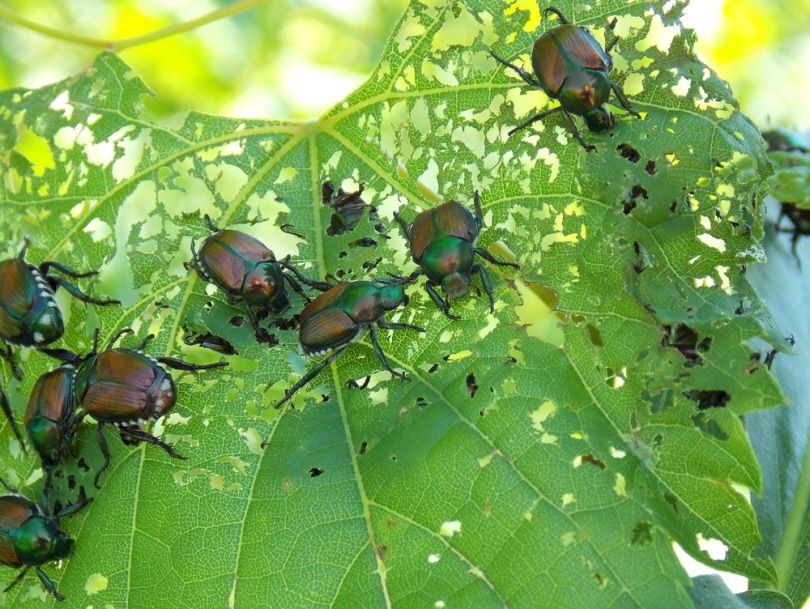
In Japan, Japanese beetles have many natural predators to keep them in check. But when they found their way to the United States in 1916 because of the World’s Fair, they found a land where they could thrive.
These small beetles might not look like much, but they can quickly demolish your garden and leave it a shell of its former self.
That’s why getting these beetles under control as quickly as possible is so important. This guide highlights nine of the most effective methods that you can use to remove Japanese beetles from your garden.
The 9 Methods to Remove Japanese Beetles From Your Garden
1. Pick Them Off
It’s time consuming, but plucking the beetles off the plants in your garden is an effective way to remove them. They don’t pinch or bite, but you still might feel more comfortable using gardening gloves to remove them.
Once you pick off the beetles, put them in a soapy water mixture. You need to kill the invasive bugs; otherwise, they’ll just come back and start feeding on the plants after you remove them.
- Easy to do
- Effective if done repeatedly
- You have to touch the bugs
- More time consuming
2. Make a Trap
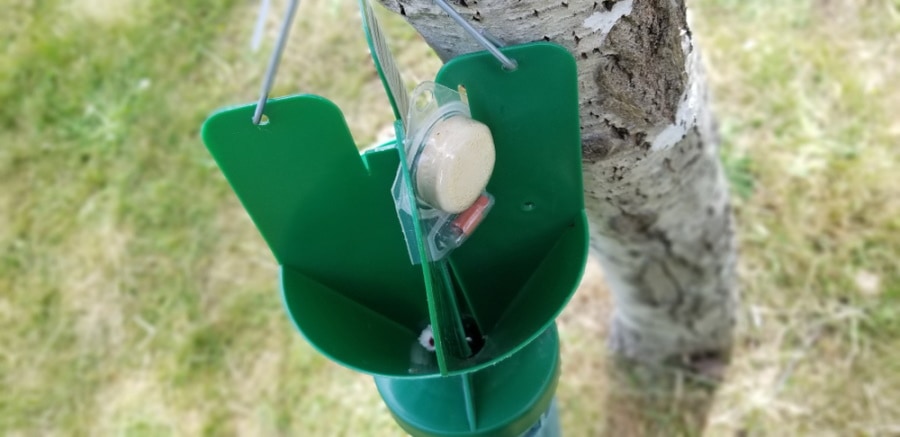
You may not want to pick off the beetles by hand. One of the most effective ways to avoid doing this is to make a Japanese beetle trap.
It’s important to put the traps away from the plants that they’re going after because the plants will attract beetles. Aim for at least 50 feet away from the plants, though the farther you can put them away, the better.
Use a pheromone and something that they can’t escape from, but be aware that there’s a good chance that you’ll attract more beetles to your yard. In fact, while you’ll catch many Japanese beetles with these traps, you might still end up with more plant damage because of the sheer number the trap brought in.
- Extremely effective
- Passive prevention
- More time consuming
- You can attract even more beetles
3. Spray Plants With Neem Oil
Neem oil is a great natural deterrent that you can use by spraying it on your plants. Not only will it deter adult Japanese Beetles, but those that consume it will spread it to the larvae, which will die before they reach adulthood.
However, you do need to reapply neem oil after every rain. Also, since it’s harmful to fish and other forms of aquatic life, if you’re near a lake, river, or pond, you shouldn’t treat your plants with neem oil.
- Easy to do
- Effective if done repeatedly
- More time consuming
- You can’t use it near natural bodies of water
4. Leave Dead Beetles Out
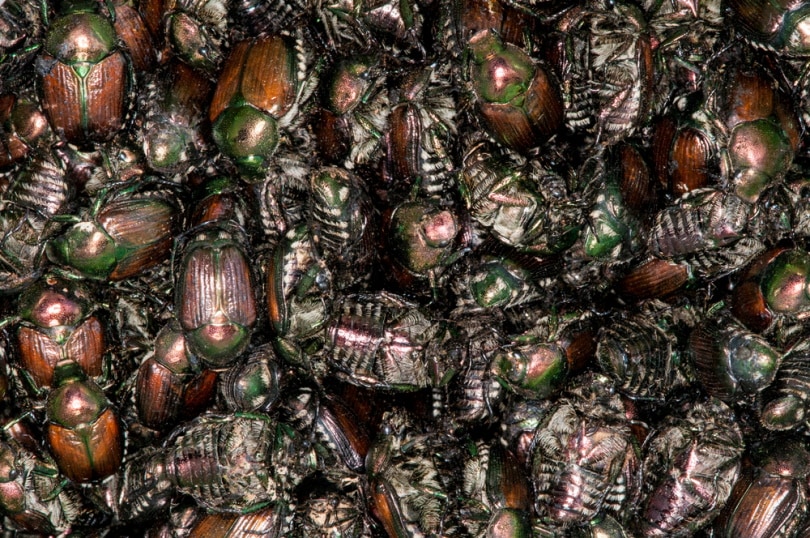
It might not be the most sightly thing to do, but the scent that dead Japanese beetles give off is a natural deterrent to new beetles. It’s not always the most effective, but if you leave larger numbers of dead beetles around some of your prized plants, it should help deter newcomers.
However, larger piles of dead Japanese beetles can look like snacks to other predators, so keep in mind that you might need to replenish your dead beetle pile to keep getting the desired results.
- Easy to do
- Natural repellent
- Not the most effective
- Predators might come and eat the bugs
5. Use Row Covers
Row covers might be the most effective way to keep Japanese beetles off your plants. They are made of a fine mesh that sunlight and moisture can get through, but it’s too small for Japanese beetles to work their way inside.
If you’re trying to highlight the appearance of your beautiful garden, row covers aren’t what you want. But if you’re looking for something with which to cover your vegetable garden and don’t care too much about the appearance, it’s hard to top the effectiveness of row covers.
- Easy to do
- Effective
- Not aesthetically pleasing
6. Take Care of Them at the Grub Stage
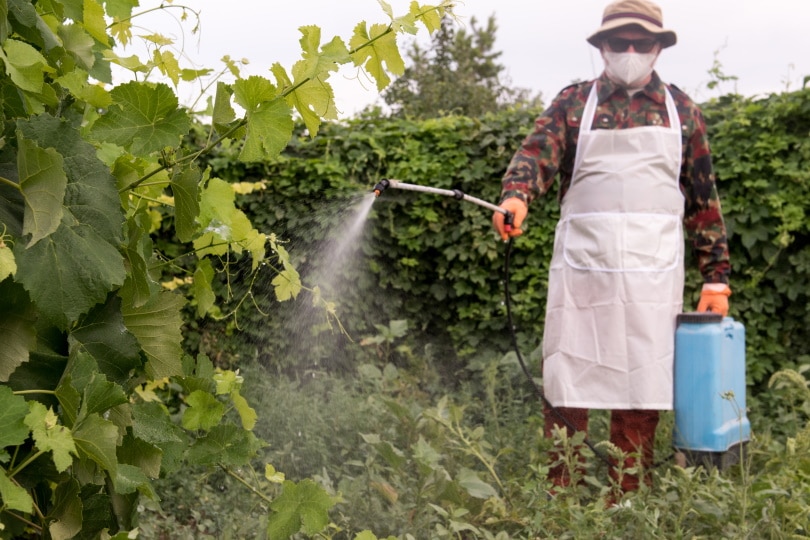
If you take care of grubs before they have the chance to turn into full-grown Japanese beetles, you’re fixing the problem before it has a chance to take root. It’s an extremely effective way to treat at least some of the Japanese beetles that are frequenting your garden.
However, since Japanese beetles are flying insects and you probably don’t own all the surrounding land near your garden, you can only treat so much. You’ll help keep the Japanese beetle population under control, but you’re still likely to deal with a few Japanese beetles that travel in from other areas.
- Effective if done correctly
- Prevents all future beetle damage
- More time consuming
- You need access to all the surrounding land
7. Bring in the Birds
If you want to take care of Japanese beetles, why not attract animals that naturally eat them? Many birds love chowing down on small flying insects like the Japanese beetles, so one of the best ways to get rid of them in your garden is to get thriving bird populations.
Bring in bird baths and bird boxes, and make your yard as bird friendly as possible. Another perk is that you get to watch these beautiful birds fluttering around your yard throughout the year. Talk about a win-win!
- Easy to do
- You get to attract tons of birds
- Not the most effective
8. Let the Lawn Dry Out
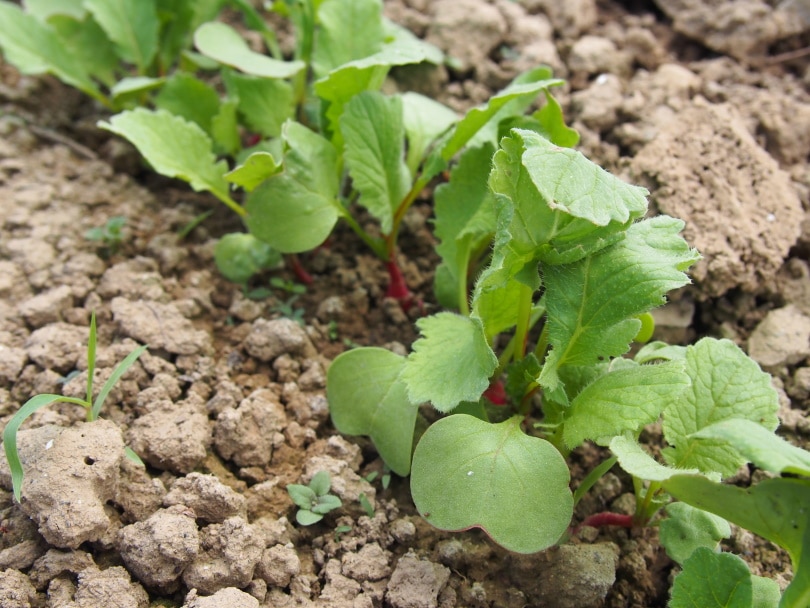
We all love thick grass throughout our entire lawn, but the problem is that those conditions are ideal for Japanese beetle grubs. If you don’t water the lawn, not as many of the grubs, if any, will survive, reducing the number that you must deal with during the summer months.
Of course, you can’t always control the natural weather, so even if you’re not watering, the natural conditions might make for the ideal grub conditions, anyway.
- Easy to do
- You get dead patches on your lawn
- Not always the most effective
9. Add Trees That They Don’t Like
Japanese beetles love to chow down on elm and birch trees, but they tend to avoid red maples, dogwoods, and pine trees. Those are just a few of the trees that the United States Department of Agriculture claims that Japanese beetles don’t like.
While it might take a while for the trees to fully mature, planting a few might be one of your best long-term moves when it comes to controlling Japanese beetle infestations.
- Effective
- You get a variety of trees in your yard
- It takes a long time for trees to grow
How to Identify Japanese Beetles
Before you start trying to treat for Japanese beetles, you need to know for sure that’s what you’re dealing with; otherwise, you might be treating for the wrong thing. The good news is that it’s typically easy to identify Japanese beetles and the damage that they cause.
First, look for their distinctive appearance. Japanese beetles are about ½” long, and they have metallic blue-green heads. They also have copper backs with tan wings and small white hairs along their abdomen.
The most distinctive sign of Japanese beetle damage is skeletonized leaves and flowers. The beetles eat all around the stems.
Before the beetles surface, the grubs will tear into the roots of many plants, leaving dead patches throughout your lawn.

Are Japanese Beetles Dangerous?
Japanese beetles are completely harmless to both humans and pets. They don’t bite or pinch but they will completely destroy plants.
Japanese beetles like roses in particular, but they’ll feed on just about any plant. They only have an adult lifespan of about 40 days, but over that time, they can cause a fair amount of damage throughout your garden.
Conclusion
If you notice leaves with large chunks missing and other unsightly damage to your garden, you might have a Japanese beetle problem. Don’t wait until it gets completely out of hand; take the time and necessary steps to remove Japanese beetles from your garden.
Not only will your garden thank you this year, but it will also make it easier to control future Japanese beetle outbreaks in your yard in future years.
Featured Image Credit: Matt Hudson, Shutterstock
Contents



